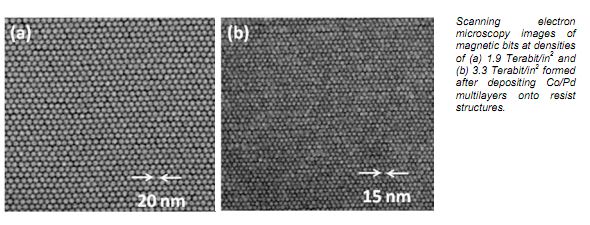Researchers in Singapore have found a way to pack six times the data today into future hard disks by basically ordering the structures on the physical drive more neatly – like packing clothes in a suitcase, they say.
Using a materials process known as nano-patterning, they have been able to create arrays of magnetic bits that can potentially store up to 3.3 Terabit per square inch ( Terabit/in²) of data on a hard disk. That is six times the recording density of current devices.
In other words, the same drive you see at Sim Lim Square storing some 1TB today could hold 6TB of data in future by using this new technology from IMRE (Institute of Materials Research and Engineering), which is one of Singapore’s government-funded A*Star research institutes.
Current hard disks use randomly distributed magnetic “grains” – with a few tens of grains to form one bit – to hold about 0.5 Terabit/in² of data. What the Singapore researchers did differently was to order the data into magnetic “islands”, with each one able to store one bit of information. This boosts storage capabilities to 3.3 Terabit/in².
“What we have shown is that bits can be patterned more densely together by reducing the number of processing steps,” said Dr Joel Yang, the scientist at IMRE who headed the project, in a press release last week.
He came up with the “magic” in the entire project – a lithography process that uses salt, or sodium chloride, in the developer solution. This helps create the required nano structures without expensive equipment.
The project is the result of work at IMRE as well as the National University of Singapore and Data Storage Institute. The researchers are looking to pack even more data into hard disks.






